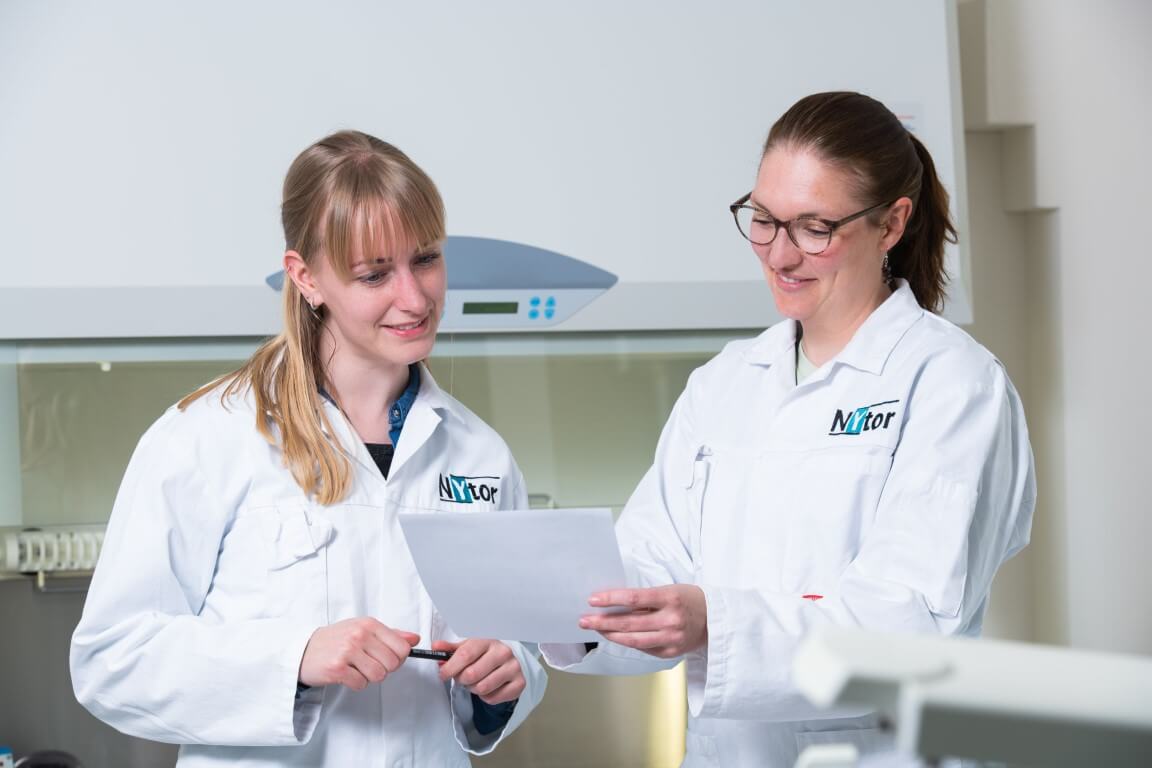
In close harmony with our customers, NYtor develops prototype molecular assays and works together with a broad network of carefully selected suppliers and partners. This results in a high-quality test development in which both the demands of our clients as well as the ISO 13485:2016 regulations are considered.
Our extensive expertise in real-time PCR ensures design of robust and sensitive molecular diagnostic assays. Tailor-made applications and approaches are an important aspect of the service that we provide along the route from target selection to prototype assay development. With considerable experience in widely applicable disciplines, NYtor is confident to be a reliable partner in molecular diagnostics.
While the company’s foundation is historically based on real-time qPCR assay development, our expertise has greatly expanded over the years. We commit ourselves to molding your request into the most appropriate MDx system and technology …. any which way possible. Think of techniques like isothermal amplification (e.g. LAMP), digital PCR (dPCR) and systems like thermal cyclers, handheld devices for point-of-care (POC), and the nanoscaled lab-on-a-chip (LOC).
Nucleic acid amplification testing (NAAT) serves a broad range of purposes in both basic and applied research. Among our fields of expertise are e.g. pathogen detection, antimicrobial resistance (AMR), forensics, and oncology. Some inspiring projects that reflect our current research focus can be found here.
Tailor-made applications and approaches are an important aspect of the service that we provide along the route from target selection to prototype assay development. Apart from complete assay development, we can also assist you in selecting mastermixes, probe types, amplification techniques, thermal cycler platforms, multiplex design and by increasing your assay sensitivity.
Our Assay Development Cycle, compliant with ISO 13485:2016 Medical devices, is divided in five phases.
In the project Definition Phase, all mutually agreed settings for the project are documented into an assay design input document. Arrangements from the contract and customer-required specifications serve as input information. In addition, the risk assessment plan and (live) documentation are now initiated.
Finally, an overall assay project plan is compiled for set-up of:
The Design Phase is used to prepare the assay design strategy document, built around the settings agreed to in the Definition Phase and assay project plan. This in silico design phase makes use of external resources (e.g. literature, GenBank) and internal know-how (e.g. design software) to select the raw materials for starting the Development Phase.
The actual wet lab assay development starts here. Based on the Design Phase, all steps for the assay build-up are carefully performed and reported. To exemplify, for a qPCR multiplex assay the routine build-up is from monoplex to multiplex for the primers and subsequently for the probes. Each primer/probe selection is followed by optimization of concentration and finalized by determination of ratios there-of. Output of the Development Phase is a design freeze.
At the start of this Verification Phase, first a prototype batch will be prepared, according to the design freeze formulation. Using this prototype batch, the complete requirement specification (design input) will be addressed and tested. These customer-agreed specifications are leading, but next to that, NYtor always starts internally with a routine QC1 (in-kit) / QC2 (key samples) check.
During the Transfer Phase all relevant output documents are combined in the Assay Design History file package.
Subsequent steps are as follows:
Features

Approximately 380 million new cases of sexually-transmitted infections (STIs) appear across the world each year. The increasing incidence of antimicrobial resistance is making them harder to treat. Molecular tests are the tools that provide rapid and accurate diagnosis, and enable as such the opportunity for a faster treatment.
The following kits are currently available for commercialization:

TVMG macrolide RES real-time PCR kit
Multiplex qPCR kit for the detection and differentiation of T. vaginalis, M. genitalium and the most prevalent mutations in M. genitalium strains conferring macrolide resistance.

MG fluoroquinolone RES real-time PCR kit
Multiplex qPCR kit for the detection of M. genitalium and the most prevalent mutations in M. genitalium strains conferring fluoroquinolone resistance.

NG fluoroquinolone RES real-time PCR kit
Multiplex qPCR kit for the detection of N. gonorrhoeae and the most prevalent mutations in N. gonorrhoeae strains conferring fluoroquinolone resistance.
We consider collaboration a core value: it drives innovation and promotes sustainability of our high-quality standards.
“Coming together is the beginning.
Keeping together is progress.
Working together is success.”
~ Henry Ford
Some examples of commercially available qPCR assays that were codeveloped with our partners:
OP-OOST Project – The Operational Program of the European Regional Development Fund in the East of the Netherlands (OP-OOST) has awarded grants for the following projects
“VIRAPOC” – Rapid virus testing at the point of care
The following 5 parties participate in the project: Micronit Microtechnologies BV (Enschede), NYtor BV (Nijmegen), Elect High-Tech Electronics BV (Weerselo), D’Andrea en Evers BV (Enschede) and Holland Innovative BV (Enschede/Eindhoven). To enable rapid diagnosis of an SARS-CoV-2 virus infection the consortium will join forces to develop an affordable point-of-care test platform consisting of a disposable chip with a handheld reader that can be guided with a smartphone app.
“Faag op Maat” – Phage: made to measure
The following 5 parties participate in the project: Trouw Nutrition Nederland (Putten), Micreos Food Safety BV (Wageningen), NYtor BV (Nijmegen), Farm Result (Wierden) and Wageningen Universiteit (Wageningen). “Faag op Maat” will provide the participating companies with an opportunity to play a leading role in developing a system based on innovative products, service and knowledge to reduce the use of antibiotics in the livestock industry, thereby making an important and pioneering step forward in the reduction of antibiotic resistance.
Interested to explore possibilities that lead to collaborative grant application?
Please contact us.
NYTOR BV
Berg en Dalseweg 199
6522 BJ Nijmegen
The Netherlands
+31 24 711 03 53
info@nytor.nl